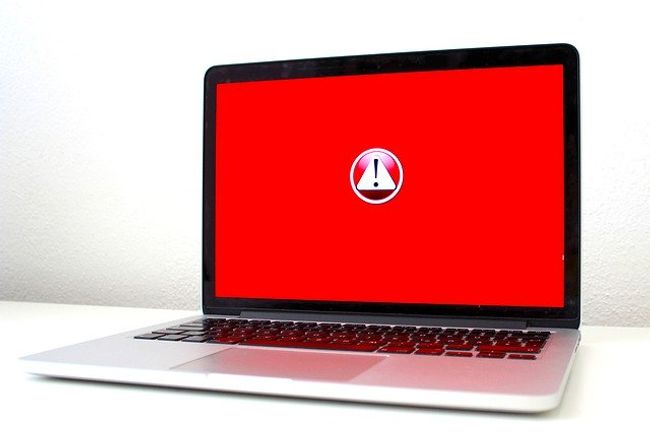Further targeted ransomware attacks on the UK education sector by cyber criminals

The @NCSC is responding to further targeted ransomware attacks on the education sector by cyber criminals.
Since late February 2021, an increased number of ransomware attacks have affected education establishments in the UK, including schools, colleges and universities.
The NCSC previously acknowledged an increase in ransomware attacks on the UK education sector during August and September 2020. The NCSC has therefore updated this Alert in line with the latest activity.
The NCSC urges all organisations to follow our guidance on ‘Mitigating malware and ransomware.’ This details a number of steps organisations can take to disrupt ransomware attack vectors and enable effective recovery from ransomware attacks.
The NCSC continues to respond to an increased number of ransomware attacks affecting education establishments in the UK, including schools, colleges, and universities.
This report details recent trends observed in ransomware attacks on the UK education sector. This encompasses trends observed during August and September 2020, as well as the more recent attacks since February 2021. It also provides mitigation advice to help protect this sector from attack.
This alert is designed to be read by those responsible for IT and Data Protection at education establishments within the UK. Where these services are outsourced, you should discuss this Alert with your IT providers.
It is also important that senior leaders understand the nature of the threat and the potential for ransomware to cause considerable damage to their institutions in terms of lost data and access to critical services
Due to the prevalence of these attacks, you should be sure to follow NCSC’s mitigating malware and ransomware guidance. This will help you put in place a strategy to defend against ransomware attacks, as well as planning and rehearsing ransomware scenarios, in the event that your defences are breached.
Ransomware
Ransomware is a type of malware that prevents you from accessing your systems or the data held on them. Typically, the data is encrypted, but it may also be deleted or stolen, or the computer itself may be made inaccessible.
Following the initial attack, those responsible will usually send a ransom note demanding payment to recover the data. They will typically use an anonymous email address (for example ProtonMail) to make contact and will request payment in the form of a crypto currency.
More recently, there has been a trend for cyber criminals to also threaten to release sensitive data stolen from the network during the attack, if the ransom is not paid. There are many high-profile cases where the cyber criminals have followed through with their threats by releasing sensitive data to the public, often via “name and shame” websites on the darknet.
Ransomware attacks can have a devastating impact on organisations, with victims requiring a significant amount of recovery time to re-enable critical services. These events can also be high profile in nature, with wide public and media interest.
In recent incidents affecting the education sector, ransomware has led to the loss of student coursework, school financial records, as well as data relating to COVID-19 testing.
Impact
Ransomware attacks can have a devastating impact on organisations, with victims requiring a significant amount of recovery time to reinstate critical services. These events can also be high profile in nature, with wide public and media interest.
In recent incidents affecting the education sector, ransomware has led to the loss of student coursework, school financial records, as well as data relating to COVID-19 testing.
It is therefore vital that organisations have up-to-date and tested offline backups.
For further information see the NCSC’s Offline backups in an online world blog post as well as the NCSC’s guidance on backing up your data)
Common ransomware infection vectors
Ransomware attackers can gain access to a victim’s network through a number of infection vectors. Indeed, it can be hard to predict how a compromise will begin, as cyber criminals adjust their attack strategy depending on the vulnerabilities they identify. However, in recent incidents, the NCSC has observed the following trends:
Remote access
Attackers frequently target organisations’ networks through remote access systems such as remote desktop protocol (RDP) and virtual private networks (VPN). They regularly exploit:
- weak passwords,
- lack of multi-factor authentication (MFA),
- unpatched vulnerabilities in software.
Remote Desktop Protocol (RDP) remains the most common attack vector used by threat actors to gain access to networks. RDP is one of the main protocols used for remote desktop sessions, enabling employees to access their office desktop computers or servers from another device over the internet. Insecure RDP configurations are frequently used by ransomware attackers to gain initial access to victims’ devices.
Often the attacker has previous knowledge of user credentials, through phishing attacks, from data breaches or credential harvesting. User credentials have also been discovered through brute force attacks because of ineffective password policies. Compromised credentials and remote access are frequently sold by cyber criminals on criminal marketplaces and forums on the dark web.
VPN vulnerabilities: Since 2019, multiple vulnerabilities have been disclosed in a number of VPN appliances (for example Citrix, Fortinet, Pulse Secure and Palo Alto). Ransomware actors exploit these vulnerabilities to gain initial access to targeted networks.
The shift towards remote learning over the past year has meant that many organisations have rapidly deployed new networks, including VPNs and related IT infrastructure. Cyber criminals continue to take advantage of the vulnerabilities in remote access systems.
Phishing
Phishing emails are frequently used by actors to deploy ransomware. These emails encourage users to open a malicious file or click on a malicious link that hosts the malware.
Other vulnerable software or hardware
Unpatched or unsecure devices have commonly been used by ransomware attackers as an easy route into networks. For example, on 11 March 2021 Microsoft reported that cyber criminals have exploited vulnerabilities in Microsoft Exchange Servers to install ransomware on a network.
Lateral movement and privilege escalation
Having acquired initial access to a network, an attacker will typically seek to navigate around the network, increase their privileges and identify high-value systems, often using additional tooling (such as Mimikatz, PsExec, and Cobalt Strike) to assist with this. They may also attempt to conceal their actions so that any subsequent investigation will be more difficult.
Recently we have also observed attackers seeking to:
- sabotage backup or auditing devices to make recovery more difficult,
- encrypt entire virtual servers,
- use scripting environments (e.g. PowerShell) to easily deploy tooling or ransomware.

Mitigation
The NCSC recommends that organisations implement a ‘defence in depth’ strategy to defend against malware and ransomware attacks. This section lists a number of important defence practices and techniques.
Your organisation should also have an incident response plan, which includes a scenario for a ransomware attack, and this should be exercised. Further details can be found in the NCSC’s recently updated guidance on ‘Mitigating Malware and Ransomware’.
Cyber security alert issued following rising attacks on UK academia
The NCSC issued (17 September 2020) an alert to the academic sector following a spate of online attacks against UK schools, colleges and universities.
Cyber security experts have stepped up support for UK schools, colleges, and universities following a spate of online attacks with the potential to de-rail their preparations for the new term.
The National Cyber Security Centre (NCSC) issued an alert to the sector containing a number of steps they can take to keep cyber criminals out of their networks, following a recent spike in ransomware attacks.
The NCSC dealt with several ransomware attacks against education establishments in August, which caused varying levels of disruption, depending on the level of security establishments had in place.
Ransomware attacks typically involve the encryption of an organisation’s data by cyber criminals, who then demand money in exchange for its recovery.
With institutions either welcoming pupils and students back for a new term, or preparing to do so, the NCSC’s alert urges them to take immediate steps such as ensuring data is backed up and also stored on copies offline.
They are also urged to read the NCSC’s newly-updated guidance on mitigating malware and ransomware attacks, and to develop an incident response plan which they regularly test.
 Paul Chichester, Director of Operations at the NCSC, said:
Paul Chichester, Director of Operations at the NCSC, said:
“This criminal targeting of the education sector, particularly at such a challenging time, is utterly reprehensible.
“While these have been isolated incidents, I would strongly urge all academic institutions to take heed of our alert and put in place the steps we suggest, to help ensure young people are able to return to education undisrupted.
“We are absolutely committed to ensuring UK academia is as safe as possible from cyber threats, and will not hesitate to act when that threat evolves.”
The new alert, Targeted ransomware attacks on the UK education sector by cyber criminals, supplements existing support that the NCSC, which is a part of GCHQ, provides academic institutions across the UK.
Examples of this include advice on the questions governing bodies and trustees should ask school leaders to improve a school’s understanding of cyber security risks, and the distribution of information cards which help staff understand how they can raise their school’s resilience to attack.
 David Corke, Director of Education and Skills Policy at the Association of Colleges, said:
David Corke, Director of Education and Skills Policy at the Association of Colleges, said:
“As the last six months have shown us, it has never been more important for colleges to have the right digital infrastructure in order to be able to protect their systems and keep learning happening, whatever the circumstance.
“This needs a whole college approach and for a focus wider than just systems, it needs to include supporting leaders, teachers and students to recognise threats, mitigate against them, and act decisively when something goes wrong.
“This guidance will prove incredibly useful for colleges to ensure that they can do just that.”
 Steve Kennett, Executive Director of e-infrastructure at the higher education support body Jisc, said:
Steve Kennett, Executive Director of e-infrastructure at the higher education support body Jisc, said:
“Jisc welcome the NCSC support in dealing with the current spate of ransomware impacting the UK Education and Research community.
“We encourage everyone to review the latest guidance from the NCSC and take the time to assess the risks to their organisation.”
Institutions that have been infected with ransomware have seen their ability to operate effectively and deliver services significantly obstructed and, depending on an organisation’s level of resilience, it can take weeks – and in some cases months – for services to return to normal.
Often the aim of cyber criminals deploying ransomware is to encrypt data that will have the most impact on an organisation’s services. This can affect access to computer networks as well as services including telephone systems and websites.
The NCSC has recently updated its ransomware and malware guidance, which is generally applicable to organisations in all industries in the UK. Additions to this include updated information on attackers’ modus operandi and advice on preparing for an incident.
Recent research reveals that half of UK universities reported a breach to the ICO in the last 12 months – revealed by an FOI campaign from Redscan in July 2020. The FOI also revealed that a quarter of universities haven’t commissioned a pen test from an external provider in the last year, while only 54% of university staff nationwide have received security training.
Redscan CTO, Mark Nicholls, said:
“UK universities are among the most well-respected learning and research centres globally, yet our analysis highlights inconsistencies in the approach institutions are taking to protect their staff, students and intellectual property against the latest cyber threats.
“The fact that such a large number of universities don’t deliver cyber security training to staff and students, nor commission independent penetration testing, is concerning. These are foundational elements of every security program and key to helping prevent data breaches.
“Even at this time of intense budgetary pressure, institutions need to ensure that their cyber security teams receive the support they need to defend against sophisticated adversaries. Breaches have the potential to seriously impact organisations’ reputation and funding.”
“The threat posed to universities by nation state attackers makes the need for improvements even more critical. The cost of failing to protect scientific research is immeasurable.”
Andy Warren, UK&I Director, Public Sector, at Veritas Technologies, said:
“2020 has shown us that when it comes to ransomware attacks, it is a matter of if, not when. With many students relying on virtual lectures, downtime caused by ransomware will have a massive impact on their education and on Universities ability to provide the services they charge for. And this is to say nothing about data compliance.”
“Breaches can do some serious, long-lasting damage. The best defence against this constantly evolving threat is a comprehensive approach to data security involving staff and student education, intrusion security, email and spam filters, antimalware, endpoint protection software and backups. Data is arguably the single most precious asset to a university but, to keep it safe, you need a strong foundation of management and best practice.
“If a robust data protection solution is in place and hackers demand ransom, universities can walk away from the criminal’s threats safe in the knowledge that they have alternative copies of their data stored safely elsewhere.”
Luke Budka, head of digital PR and SEO at TopLine Comms, the agency that submitted the requests, says:
“The recent revelation that hackers extorted $1.14m from the University of California prompted us to submit request to UK universities asking for details on ransomware attacks and ransom amounts paid. We were naturally most interested in Russell Group universities as their research focus suggests they’ve got the most valuable intellectual property.
“Of the 18 Russell Group universities that responded, all but three refused to answer the questions submitted. The University of Manchester admitted it had been attacked but said it didn’t record when; The University of Sheffield was attacked in 2015 and The University of Edinburgh stated it had not been attacked in the last ten years.”
One third of UK universities have been subjected to ransomware attacks according to Freedom of Information requests submitted to 134 universities in July 2020.
Of the 105 universities that responded, 35 universities admitted to being attacked (33%), 25 universities said they hadn’t been (24%) and 43 universities refused to answer (45%) – full list can be accessed here.
Refusals typically centred around the universities’ concerns that admission of attack would encourage further misdemeanours (typically citing 31.1.a of the FOIA – ‘the prevention or detection of crime’). They stated that no inference as to whether they’d be attacked or not, should be drawn from the refusal that the information requested does or does not exist.
Certain universities, including the University of Oxford, felt that their profiles made them more likely to be attacked. Oxford notes: “…launching a successful attack would then be regarded in criminal circles as a noteworthy achievement, particularly in view of Oxford’s high public profile.”
Of all the 35 universities that admitted they were attacked, 34 confirmed they did not pay ransoms. The remaining university, Liverpool John Moores, refused to reveal whether it’d paid a ransom or not.
The majority of incidents happened in 2015 (31% of incidents), 2016 (34%) and 2017 (23%).
With most universities reporting isolated incidents, Sheffield Hallam University and City, University of London stood out, reporting 42 attacks since 2013, and seven attacks since 2014, respectively.











Responses